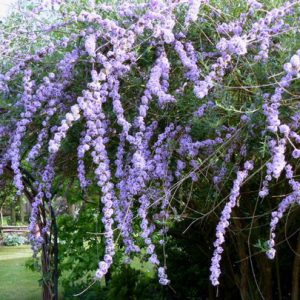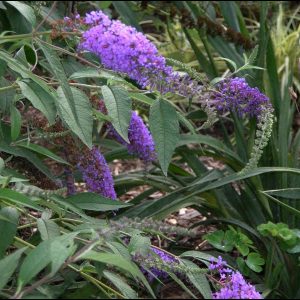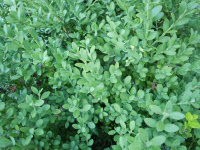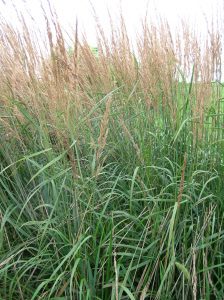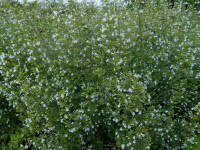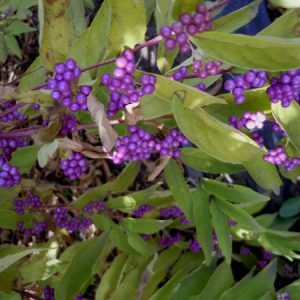Our Plants
Showing 97–104 of 587 results
-
Buddleja alternifolia ‘Argentea’ Silver fountain butterfly bush Z 5-9
Graceful, arching, weeping silvery foliage with cascading lavender flowers
Graceful, arching silvery foliage and, in early summer, lavender, fragrant flowers cascade all along the stems. A cloud of purple.
Size: 8-10” x 8-10” fast growing
Care: sun to part shade in moist well-drained to well-drained soil. Prune just after blooms finish if you wish.
Native: China & Japan
Wildlife Value: attracts butterflies
Awards: 1998 Plant Select ® awardBuddleja named to honor botanist Reverend Adam Buddle, Vicar of Farmbridge in Essex, (1662-1715) Alternifolia means the leaves alternate on the stem. The 1st Buddleja alternifolia was found by plant hunter and horticulture author Reginald Farrer (1880-1920) in western China in 1914. The cultivar’s name ‘Argentea’ means silver due to the tiny hairs on the foliage giving the plant a silvery appearance. ‘Argentea’ selected at Hillier Nursery in England in 1939.
-
Buddleja davidii Butterfly bush, Summer lilac, do ye zui cao in China Z 5-9
Fragrant, large, lilac to purple arching spikes from mid-summer through fall
OUT OF STOCK
Fragrant, large, lilac to purple arching spikes from mid-summer through fall
Can not ship to: Delaware, Maryland, North Carolina, Oregon, Pennsylvania, Tennessee and Washington
Size: 6' x 4'
Care: Sun in well-drained soil.
Native: Sichuan & Hubei provinces, China
Wildlife Value: flowers very fragrant, attracts many butterflies, excellent cut flower
Awards: Royal Horticultural Society Award of Garden Merit.Buddleja named to honor Reverend Adam Buddle, Vicar of Farmbridge in Essex and botanist. (1662-1715) Davidii honors Fr. Armand David a French missionary who noticed it. Introduced to gardens by another French missionary Jean Soulie (1858-1905). Soulie made dangerous expeditions to the Tibetan border of China and ultimately lost his life when he was tortured and shot in 1905. This species 1st sent to the West (Kew Gardens) by Dr. Ernest Henry who found it near Ichang in 1887. Irishman Dr. Henry worked as a customs officer in Shanghai and an assistant physician in Ichang.
-
Buxus microphylla var. koreana syn. B. sinensis var. insularis
SHRUB Boxwood
SHRUB Boxwood
Size: 24” x 30”
Care: Light to Part shade in well drained, alkaline soil. Do not crowd with other plants, roots prefer no competition. Fertilize regularly for dramatic growth. Prune in early spring. Unlike English boxwood this can be pruned back hard. One of a few shade tolerant evergreens and deer resistant too. Also the most hardy Boxwood.Introduced from Asia to American and European gardens around 1900 by Ernest Henry “Chinese” Wilson (1876-1930) who scoured Asia for plants.
-
Calamagrostis brachytricha Diamond grass, Feather reed grass Z 4-9
Extraordinary, voluptuous plumes with pink caste, September to November, much underused. One of internationally known garden designer Piet Oudolf’s 100 “MUST HAVE” plants, Gardens Illustrated 94 (2013)
Extraordinary, voluptuous plumes with pink caste, September to November, much underused. One of internationally known garden designer Piet Oudolf’s 100 “MUST HAVE” plants, Gardens Illustrated 94 (2013)
Size: 4' x 30"
Care: Full sun to part shade in moist to moist well-drained soil.
Native: East Asia
Awards: England’s Royal Horticultural Society Award of Merit & Great Plants for Great PlainsDescribed in 1854 in Synopsis Plantarum Glumacearum.
-
Calamagrostis x acutiflora”Karl Forester” Feather reed grass
Completely, reliably erect grass - winner perennial plant of year award 2001.
Completely, reliably erect grass – winner perennial plant of year award 2001.
Size: 3-5' x 2'
Care: sun to part shade in moist to moist well-drained soil. Cut back in late winter.
Awards: Perennial Plant Association Plant of the Year 2001This is a natural cross of Calamagrostis epigeos and Calamagrostis arundinacea, natives of Asia and Europe. German nurseryman Karl Forester’s (1874-1970) keen eye spotted this in the Hamburg Botanic Garden. He listed this in his nursery catalog in 1939. Under Nazi domination he risked it all by keeping Jewish friends & workers. After WW II his nursery was the only perennial supplier in East Germany. This grass sent from Denmark to the US in 1964.
-
Calamintha nepeta ssp. nepeta syn. Clinopodium nepeta ssp. nepeta Lesser calamint Z 4-9
Profuse violet blooms on mint-scented, gray-green foliage gives frosty image, June-October
Profuse violet blooms on mint-scented, gray-green foliage gives frosty image, June-October
Size: 18-24” x 8-12”
Native: Europe and Mediterranean
Wildlife Value: attracts bees, butterflies and hummingbirdsThis subspecies 1st described by Linnaeus in 1753. Genus name comes from Greek kalos meaning beautiful and minthe meaning mint. It is not, however, a mint and is not invasive.
-
Callicarpa dichtoma Beautyberry Z 5-8
Tiny pale pink flowers in late summer turn to glossy, purple berries in fall
OUT OF STOCK
Tiny pale pink flowers in late summer turn to glossy, royal purple berries in fall. Grow this for the berries.
Can not ship to: Alabama.
Size: 5' x 4'
Care: Full sun to light shade in moist well-drained to well-drained soil. Prune back in early spring nearly to ground.
Native: China and Japan
Awards: Pennsylvania Horticultural Society Gold Medal Plant Award.Collected for gardens before 1800.
-
Callirhoe digitata Finger poppy mallow Z 5-8
Purple-red cups wave atop leafless stems all summer.
OUT OF STOCK – EMAIL FOR AVAILABILITY
Purple-red cups wave atop leafless stems all summer.
Size: 1-3’ x 1’
Care: full sun in moist well-drained soil
Native: Missouri and Kansas to Arkansas & TexasCallirhoe is named for the goddess Callirhoe, daughter of Hermocrates, the Greek river god. Digitata means shaped like an open hand (digits = fingers). First collected by Englishman Thomas Nuttall, trained as a printer, turned extraordinary plant hunter who looked for plants from the east coast throughout the Midwest, Arkansas, Florida, to the Pacific Northwest and Hawaii (1786-1859).

